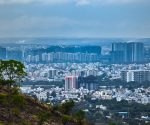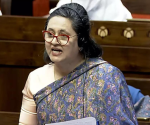Dr Jagadish Shukla, India’s top meteorologist, on climate, forecasting, and India’s failures

The arc of Dr. Jagadish Shukla’s life is an extraordinary one, shaped in equal parts by curiosity, resilience, and good fortune. Born in the drought-prone village of Mirdha in Uttar Pradesh, with no electricity and barely a functioning school, Shukla rose to become one of the world’s most respected meteorologists. At the Massachusetts Institute of Technology (MIT), he was mentored by pioneering climate scientist Jule Charney, turned down an offer from the legendary Pakistani theoretical physicist and Nobel laureate Abdus Salam, and went on to challenge the butterfly effect theory, showing that slowly evolving ocean boundary conditions could offer more predictive skill than chaotic initial states. Until just four decades ago, the scientific consensus held that weather could not be predicted beyond ten days; Shukla’s work helped overturn that idea, laying the foundation for modern seasonal forecasting.

In the 1980s, he played a key role in bringing India its first Cray supercomputer for weather forecasting. Today, Shukla, 81, is a Distinguished University Professor at George Mason University, where he founded the Department of Atmospheric, Oceanic, and Earth Sciences, as well as the Center for Ocean-Land-Atmosphere Studies. His recently released book, A Billion Butterflies: A Life in Climate and Chaos Theory, blends reminiscences, science history, and urgent critique. In this interview with the Hindustan Times, Dr. Shukla reflects on his childhood, scientific breakthroughs, and the state of Indian meteorology.
You grew up in Mirdha, in UP, a village with no electricity, no proper school building. How did that environment and your early encounters with nature influence your interest in weather and climate science?
One of the defining experiences of my childhood was going through major droughts. In 1972, while I was a graduate student at MIT, I returned to my village for a few days, and there was no food. It was a terrible drought, but at the time, nobody, not in India, not even at MIT, could explain why. It was only ten or fourteen years later that we discovered the connection to ocean temperatures in the Pacific. That stayed with me. From a young age, I kept wondering: what could I do for my village? That question drove my work. Rain, too, was both worshipped and feared. When it came for the first time, it brought excitement and joy. But then it would just keep coming, and soon there was flooding. For people who were not well off, it was devastating. Most villagers didn’t have proper houses, so rooms would leak or flood. I saw both sides of it very early, the hope and the hardship.
When I came to MIT, I was already interested in predicting the monsoon. But the big gurus were saying, “You can’t predict beyond ten days.” So I had to change strategy. I worked on why monsoon depressions form. That’s how I got my PhD. But I knew that wouldn’t help people directly. I wanted to go further: to seasonal prediction. And that’s where the idea came in: the boundary conditions like ocean temperature, they change slowly. If we understand them, we can predict beyond ten days. That’s what I focused on.
You’ve worked on long-term seasonal prediction for over five decades. How satisfied are you with the progress so far, and how much further do you think we can go?
So let me just say that I’m not happy with it because the skill of seasonal predictions is not as good as I had hoped. We’re still learning. Everyone talks about how AI and machine learning are changing everything, but for seasonal or climate prediction, they haven’t helped. AI is only now becoming comparable to physics-based weather forecasting for short-term predictions, up to ten days, using our dynamical models.
These models are built on the laws of physics and not just on historical data. AI models need vast amounts of past data to train on, much of which comes from our physics-based systems in the first place. What they do have is very fast machines. They take 70 years of data, every six hours, globally, and fit it to predict day one, then day two, and so on. But again, that’s only for short-term forecasting. In my biased opinion, AI alone will never match physics-based models. Some centres, like one in Europe, have already started combining the two — and that shows promise.
How has India’s forecasting and climate infrastructure progressed?
India has made some progress, especially in short-term forecasting and disaster response. But when it comes to advanced systems like those used by the European Centre, we’re not there yet. Our seasonal forecasts aren’t as reliable, and part of the problem is our inability to assimilate global data effectively.
We also lack a consolidated national centre with the technical talent and computing power needed to build and refine models. Forecasting here is fragmented. Research happens in one place, operations in another.
Right now, climate science sits under the Ministry of Earth Sciences, mainly institutions like NCMRWF (National Centre for Medium Range Weather Forecasting) and IMD (Indian Meteorological Department), where I’ve worked. Policy, on the other hand, is handled by the Ministry of Environment, Forest and Climate Change. The ministry was renamed in 2014 to the Ministry of Environment, Forest and Climate Change (MoEFCC). But ironically, since the name change, ‘climate’ often gets left out. Many climate scientists aren’t even invited to meetings anymore. So yes, the structure exists. But the coordination doesn’t. That’s the problem. That’s the system. The structure is there. But nothing happens.
What would it take to make Indian cities more climate-resilient?
Urban climate resilience will require major planning reforms. There is no doubt climate change is real — we’re already seeing extreme rain and heat. But most of our cities aren’t built for it. We need adaptation, not just mitigation. That means managing water, heat, health, and infrastructure in a coordinated way.
That’s why I’ve long called for a National Climate Assessment. In the US, the White House does it — every sector, every state. In India, ministries work in silos. It has to come from the top, from the Prime Minister’s office. When Manmohan Singh launched the National Action Plan on Climate Change, he understood this. He was very progressive, always able to grasp the science quickly. That kind of leadership is what made a difference then.
And for rural areas and farmers, the problem is the same. Communication. Forecasts are improving, but the farmer in my village still doesn’t know what’s coming in the next five days. Seasonal forecasts can help a lot, and we now have good models to do that. But again, we need systems that can communicate this information in a local language, through trusted channels. AI can help here, not with the forecast itself, but in getting the right information to the right people at the right time.
What’s next in monsoon science?
Indian Ocean temperature plays a very important role in the monsoon. For a long time, we used to think predictions were mainly based on the Pacific Ocean and El Niño. But this is where the future lies. The second big factor after the ocean is land. Can we predict how wet the land will be for the whole season? My early work was on land, not just how wet it is, but also the snow cover over the entire Eurasian continent. That affects the monsoon too. The area where progress is being made now is in predicting these boundary conditions. Because it’s no longer just about atmospheric models. You need a very good land model that can calculate the interaction between the atmosphere and snow.















